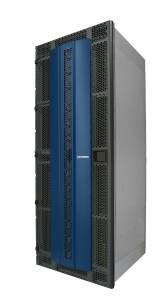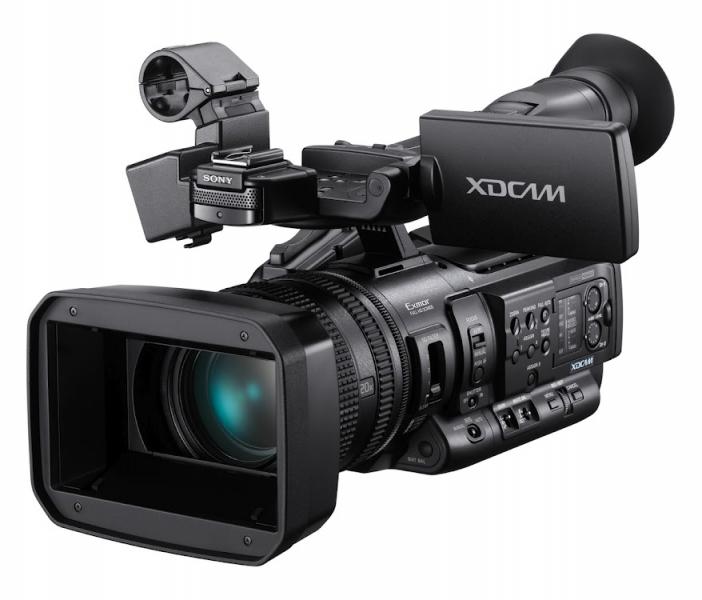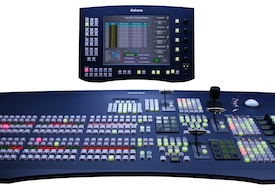At IBC, vendors struggle with cloudy crystal ball
Whether it’s IP-based video delivery, Ultra HD production or the latest form of compression, vendors at the IBC Show in Amsterdam were in general agreement that predicting what broadcasters want to purchase is getting tougher. In a quadrennial year, when there are no Olympics or political elections coverage to necessitate equipment spending (and profits are soft), manufacturer

s were left feeling a bit in the dark, not exactly sure where to allocate R&D and marketing resources.
“It’s a tough time to get a clear picture of where broadcasters see their immediate future and what we have to do to address that need,” said Charles Vogt, the new CEO of Harris Broadcast. “This market is very fragmented, with a lot of competitors, so you have to be sure to invest in the right things.”
Indeed, while many companies were singing the praises of 4K production, post and delivery, Vogt said he thought it was a bit early in the consumer buying cycle for new Ultra HD TV purchases and thus would wait before introducing new 4K-capable products. That’s not to say Harris won’t play in the 4K space with its routers, servers, multiviewers and other infrastructure products; it's just that Harris and Vogt have a lot more to worry about, like streamlining the company’s assets from the current 15 worldwide locations to five or six and making the newly independent organization profitable.
“The key is to align ourselves with customers more closely and find out what they need most today, not tomorrow,” Vogt said, adding that he wants the new Harris to operate like new entrepreneurial.
That’s apparently a similar strategy to what Grass Valley is pursuing, choosing to avoid the initial hype and confer with its customers (whose live production customers are not as sold on 4K as others). Mike Kronk, Senior Vice President of Marketing at Grass Valley, said he’s spoken with many customers who say that current 4K cameras are not up to the challenge of outside production.
“I’ve had people tell me that they can’t focus on the shaded areas of a football pitch from a distance with a single sensor camera (due to decreased depth of field),” Kronk said. “Also, we’re looking at having fewer cameras on a production — like the early days of HD and 3D — at a time when viewers are used to more. We think it’s a bit early to be pushing 4K. We’ll have the necessary equipment when we feel the time is right.”
The professional video industry's #1 source for news, trends and product and tech information. Sign up below.
To this end, Grass Valley showed the latest version of its EDIUS edit software, which now offers real-time 4K editing tools.
Arri, Blackmag

ic, Canon, Panasonic, Red and Sony all displayed products suited for 4K acquisition, as they collectively are trying to whet the industry’s appetite for higher quality production. The effort is critical to each company’s future survival. Most agree that images that include 3840 pixels × 2160 lines are ideal for program creation and archiving but not so much for over-the-air transmission. In the early stages of the 4KTV transition, much of this 4K content will be down-rezed to 1080p using technology from companies like AJA Video, Snell and Quantel. (Supporting 4K distribution, there were several HEVC demonstrations showing real-time encoding of 4K material from companies like Elemental Technologies, Ericsson, Franhauffer Institute, Harmonic, Sagecom, SES, and others, but device decoding continues to be a hurdle due to MPEG LA licensing issues.)
For many companies, the near-term solution is to more closely integrate product lines to better serve customers’ systems wide desires. Broadcasters don’t want individual boxes, per se; they want collaborative workflow technology that operates harmoniously as a whole.
Patrick Harshman, CEO of Harmonic, spoke of the “functional video collapse,” whereby traditional hardware-based features and functionality is now being delivered in software. This fits with customers' desire to do more with fewer resources. At the show, Harmonic introduced new software applications for its ProMedia software that provide multiscreen capabilities such as Time-Shift TV, ad insertion, closed captioning and adaptive bit-rate audio streaming.
“In a world of multiscreen delivery, we’re becoming more relevant than ever before,” Harshman said. “Now we just have to continue to look at new ways of helping broadcasters monetize their content. Compression is more important than ever before, so we know we’re on the right track.”
Elemental Technologies is a provider of software that helps delivery content to all display devices in a highly automated way, which would seem to put it squarely where multichannel operators want to go, but finding the right balance of storing content in the cloud or on premise (or a combination of both) has been the challenge for customers and Elemental.
“For the first time software-based solutions are leading the transition, not hardware,” said Sam Blackman, co-founder and CEO of Elemental Technologies. “That’s significant because the flexibility of software-based architectures can be leveraged in so many ways. We have to help customers find the right balance.”

Even for smaller companies like MultiDyne, which offers video transports (and conversion) over fiber solutions, the answers are not clear.
“When there’s uncertainty in the marketplace, you’ve got to stay with what you know, as a manufacturer, and continue to innovate in your space,” said Frank Jachetta, president of the company. MultiDyne showed its new The BullDog field transceiver at the IBC Show. “Customers understand value and they know what they need, so we as an industry should not be trying to sell them something they don’t need.”
Although the immediate future for broadcasters remains cloudy, virtually every manufacturer understands that listening to customers before you invest money in new technology is the right strategy, perhaps now — in a slowly recovering economy — more than ever before.
